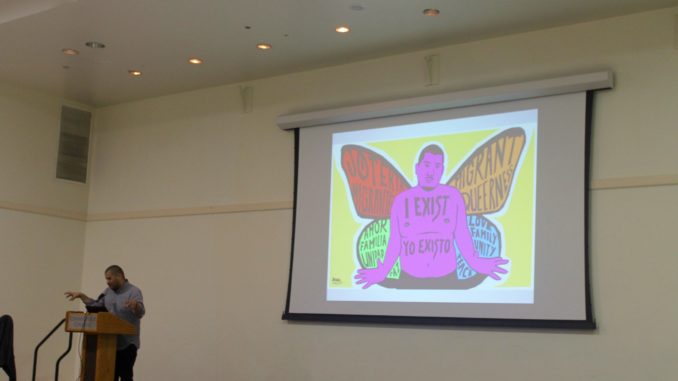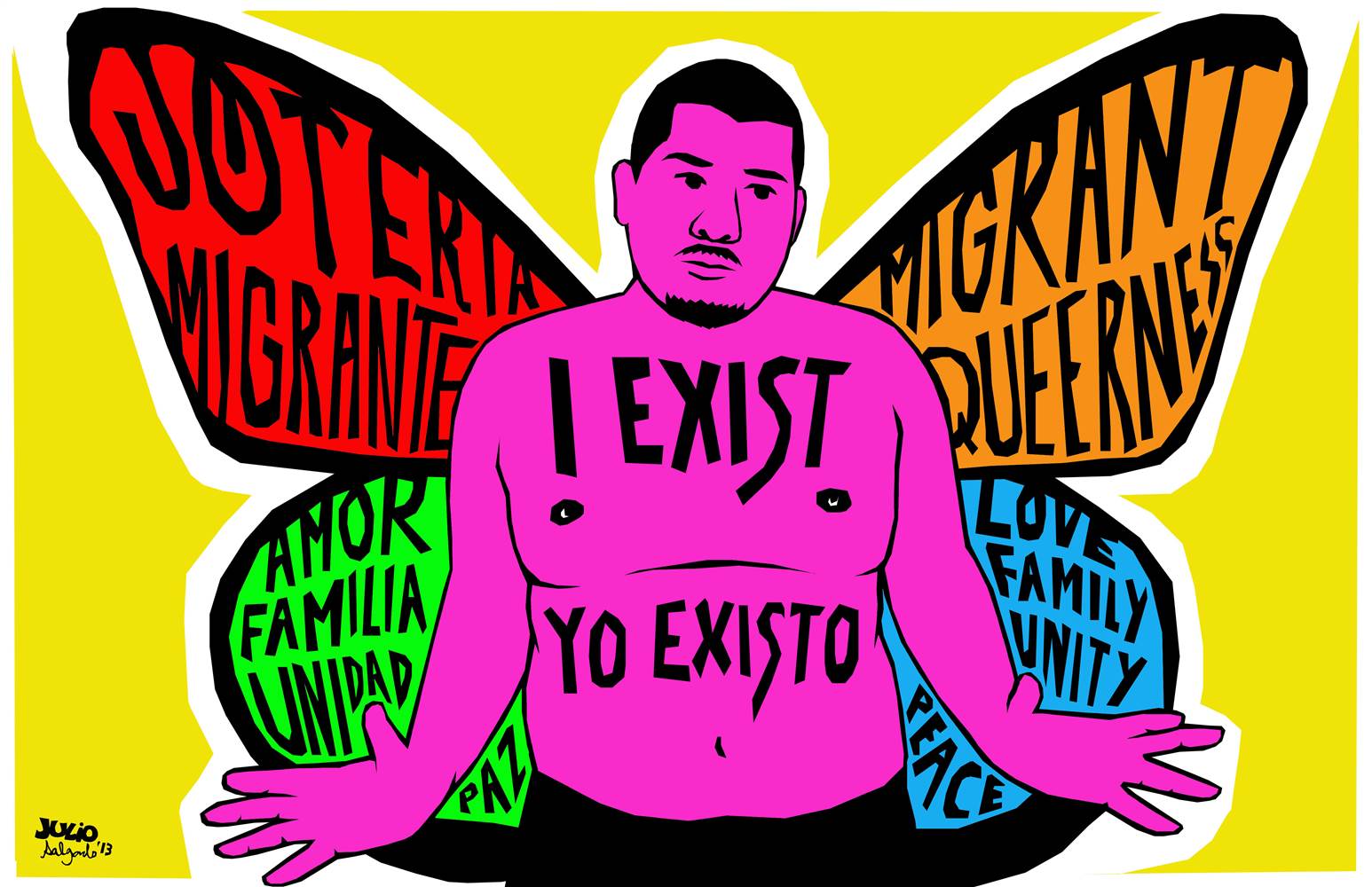The LGBTQIA center hosted Julio Salgado for a talk and poster-making workshop on Wednesday, Sep. 6. A self-described “artivist,” Salgado creates bold cartoons and visual art which depict moments from the DREAM Act’s implementation and the migrant rights movement. Salgado is a gay, undocumented man of color, and his art empowers LGBTQ+ and undocumented people. Salgado is also the founder of dreamersadrift.com, a media platform that focuses on the reclamation of the undocumented narrative through various forms of art. He is also the project manager for Culturestrike, an organization that supports socially-engaged artists.
Although the event was held primarily to kick off Hispanic Heritage Month, it gained significance by falling just one day after the Trump administration’s announcement of the DACA repeal. Salgado established and stuck by the notion that though potentially dangerous, his undocumented status does not limit his identity. With the declaration, “I’m a queer artist of color and I’m still alive!” guiding his presentation, Salgado focused on reclaiming his own narrative as someone who belongs to multiple marginalized groups. In particular, he noted that many other queer artists of color have not been celebrated until after their deaths, preventing them from speaking about their work.
Salgado began his presentation by showing a video he made with Dreamers Adrift that commented on the way that mainstream media outlets discuss undocumented people. The video was a mock interview in which the interviewer dominated the conversation and framed the undocumented interviewee’s story as one of pity and strife. Salgado proceeded to discuss his own background and how his personal life influences his art.

Photo courtesy of Shae Albertson.
Salgado was born in Mexico, and, at age eleven, when his sister was diagnosed with a life-threatening kidney disease, he and his family immigrated to the United States. A doctor advised that returning to Mexico would result in his sister’s death, so his family made the “courageous and responsible” decision to remain in the United States. Salgado cites his mother and her bravery in making this choice as one of his biggest influences in his artistic journey. Salgado used art as a vehicle for communication with others even at a young age because, while he could not speak English, his drawings garnered interest from his classmates, thus driving them to become his friends.
However, Salgado did not feel represented in the art world, because the artists about whom he was taught in school were all white. It was not until he discovered Frida Kahlo’s work that he felt an emotional connection to any aspect of the art world. Salgado had drawn political cartoons for his college newspaper, but his art career truly began when a group of undocumented students protested for the DREAM Act in front of a senate building, and one of the girls was arrested for refusing to leave the sit-in. Salgado had seen this image in The Washington Post, and he decided to draw it. Since then, he has been using his artwork to give a voice to those who have grown up in the closet.
Salgado’s political art is motivated by the very political climate that aims to stifle his voice. He notes: “I might not have control over a lot of things that are going on and that are directly affecting me, but I have control over my art.” With bright colors, bold strokes, and blunt, unapologetic captions, Salgado’s images demand attention and makes nuanced, forgotten messages accessible to mainstream audiences. As these images reveal the humanity of those whose identities are made political, Salgado evokes empathy and celebration of diversity, not pity.
Salgado’s notable works include “Undocumented Apparel,” a project which was a response to an American Apparel ad that attempted to promote “unity” between white people and people of color, but appeared tasteless and ignorant because it failed to address racial tension. In response, Salgado drew pictures that depicted the realities of immigrant life. This project garnered enough attention that American Apparel, feeling threatened by Salgado’s artwork, reached out to apologize.
Salgado also created #IllegalsInTimesofCrisis, a series that depicts undocumented people living normal, prosperous lives. These images disrupt two prevailing narratives: that immigrants are a threat to our country and that their lives are nothing but sorrow. Salgado’s response to the Orlando shooting conveys a similar message. He created images of people in gay bars having a good time to demonstrate that, despite the oppression and discrimination he faces, he will continue to dance proudly and embrace his identity. Salgado links his gay and undocumented identities in his artwork, referring to himself with the popular label “UndocuQueer.” He believes that these two aspects of his identity are deeply linked, despite oppositions that sometimes occur between the two groups that “UndocuQueer” implicates. One piece that exemplifies this intersectionality is a self-portrait in which the words “I exist/yo existo” are emblazoned across Salgado’s chest. Salgado sports butterfly wings, which are representative of his immigrant status, as monarch butterflies migrate, as well as his gay identity, because “mariposa,” the Spanish word for butterfly, is used as an insult to gay people. Salgado’s reclamation of slurs demonstrates how he has fully embraced all aspects of his identity.
Salgado’s work continues to inspire and provide eye-opening perspectives. He stands out because he shows that one does not need to be marching at every protest, bullhorn in hand, to be an effective activist. By using his artistic talents to communicate messages and convictions that he holds deeply, he creates work that oozes with passion. Salgado is truly a force to be reckoned with. He proclaims: “My creativity cannot be deported.”









